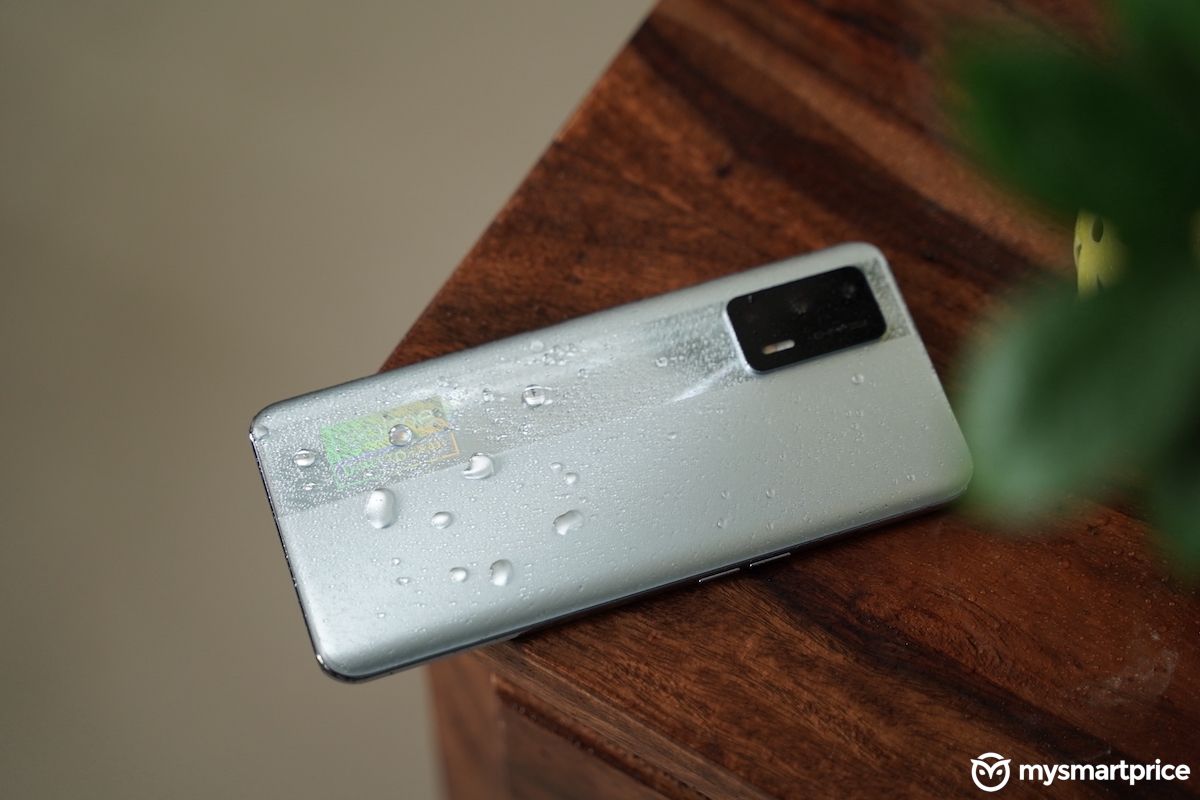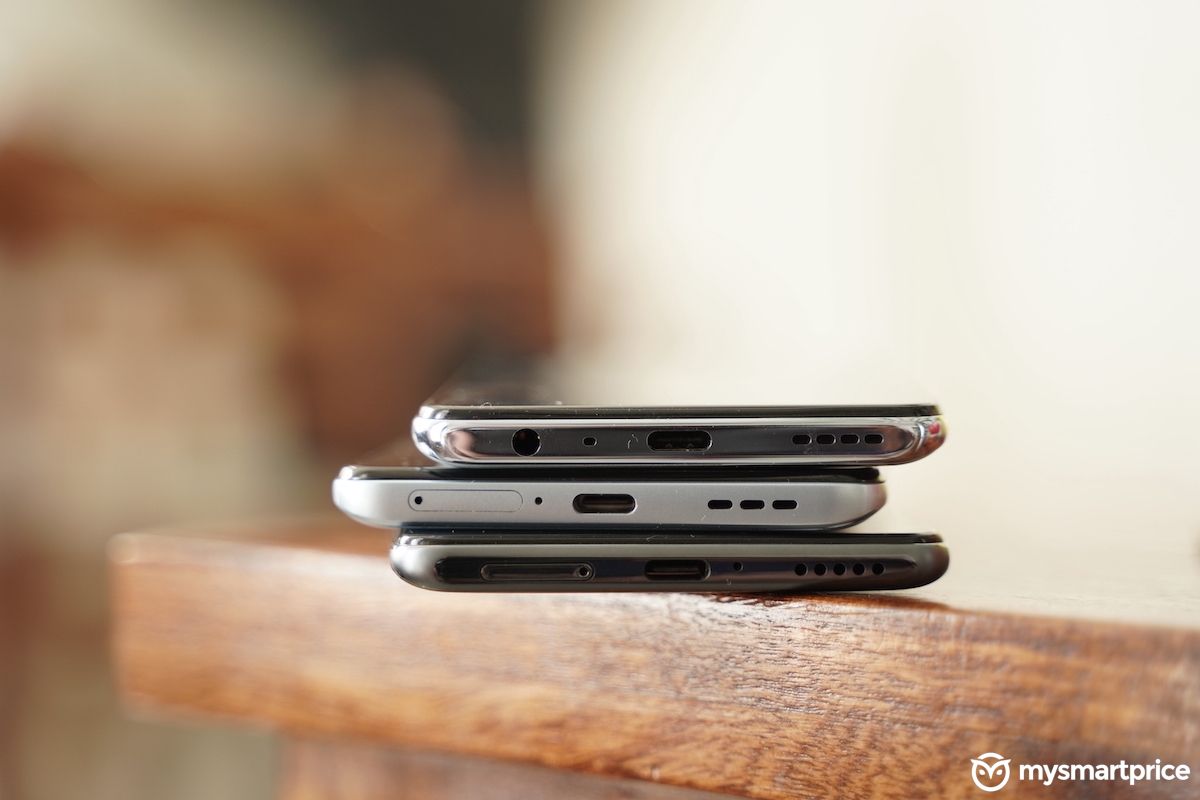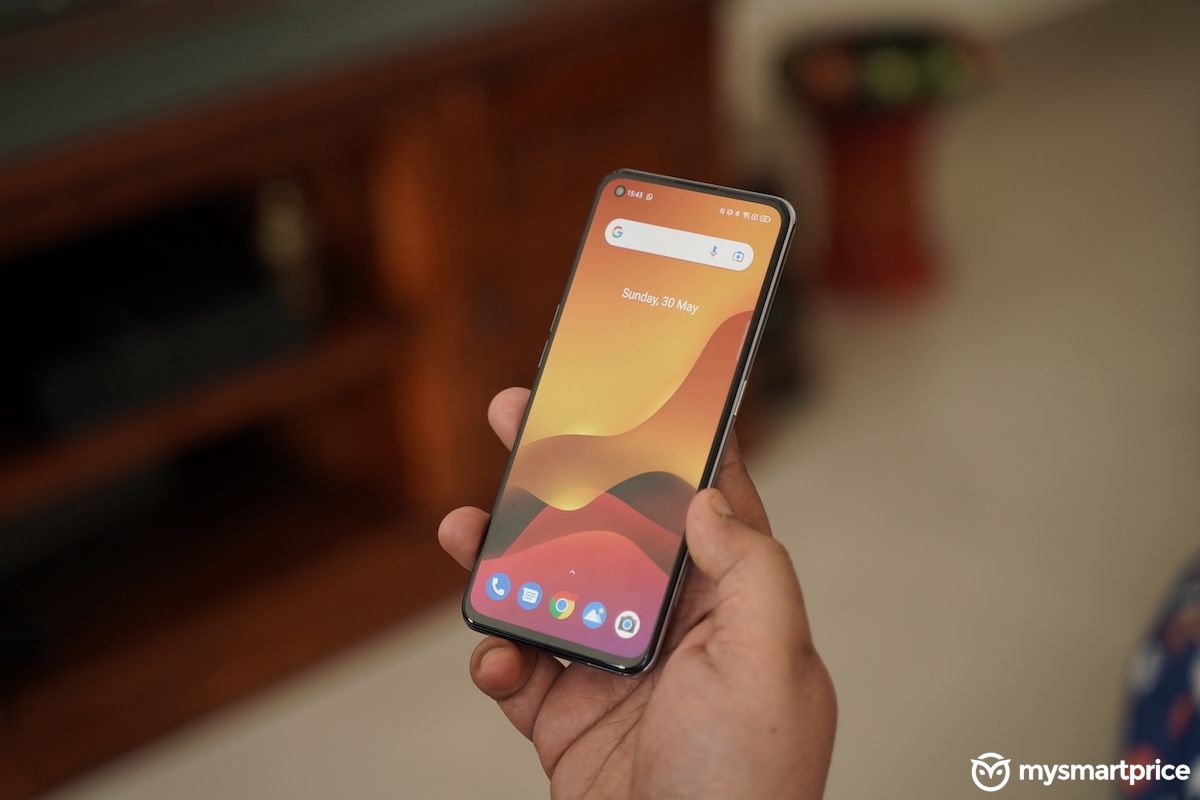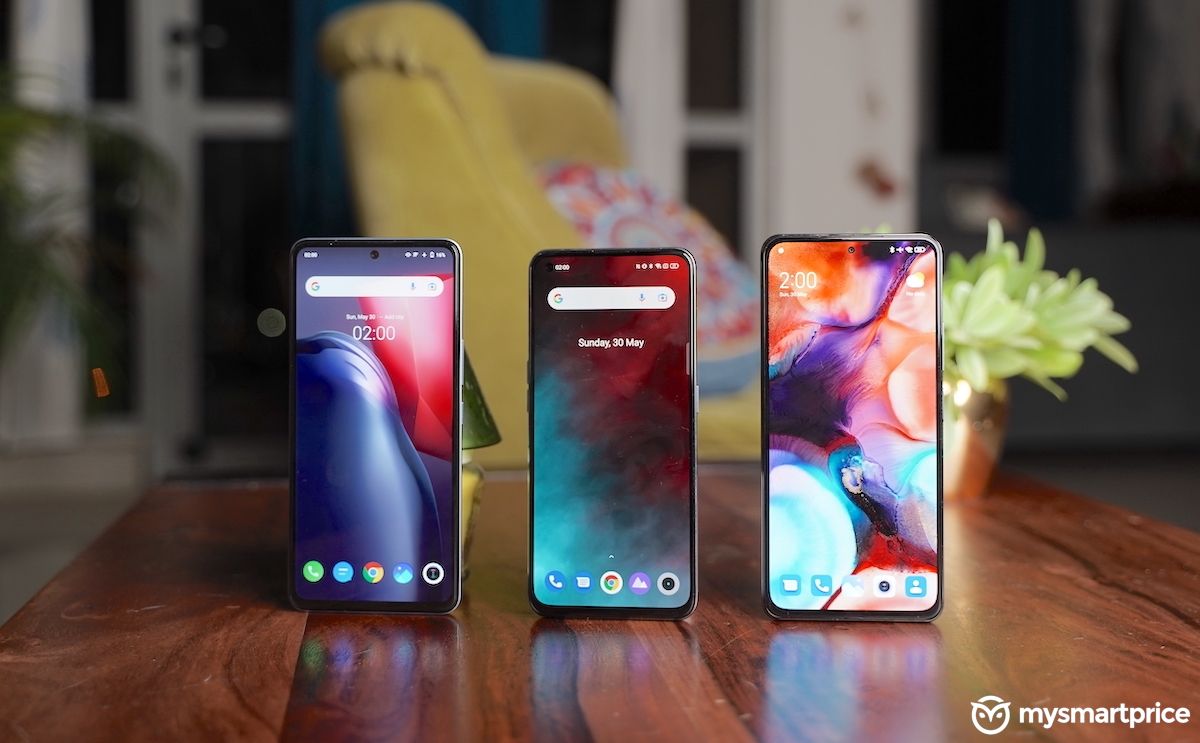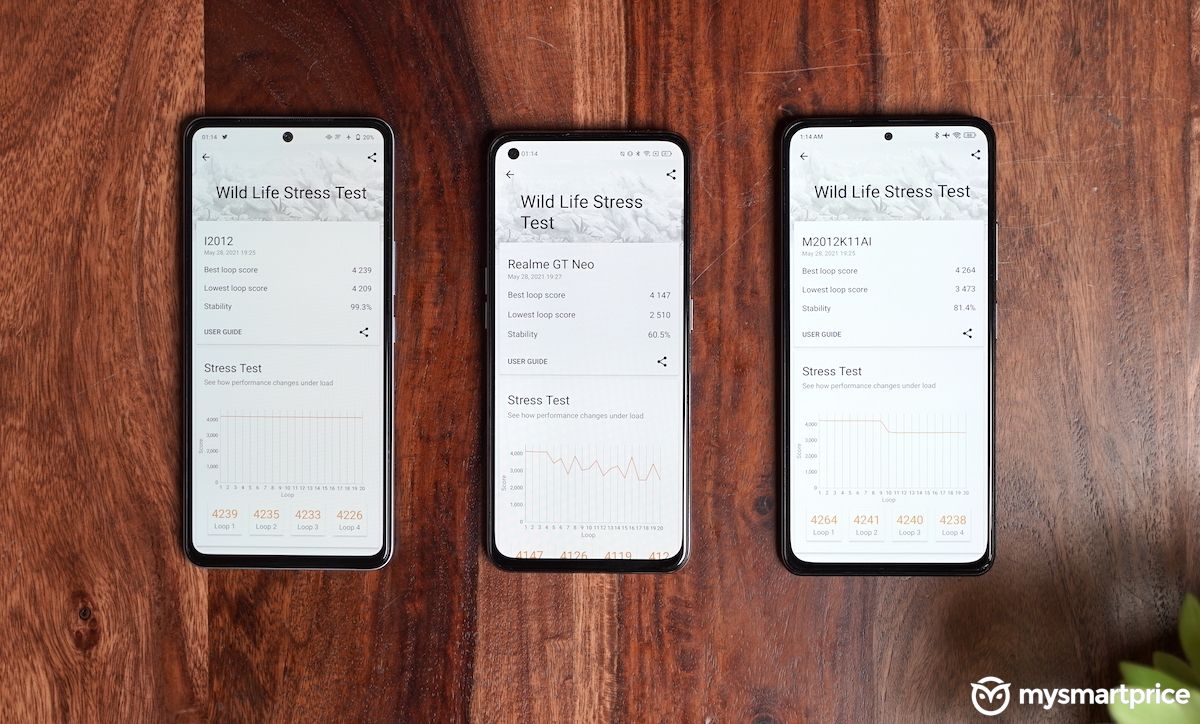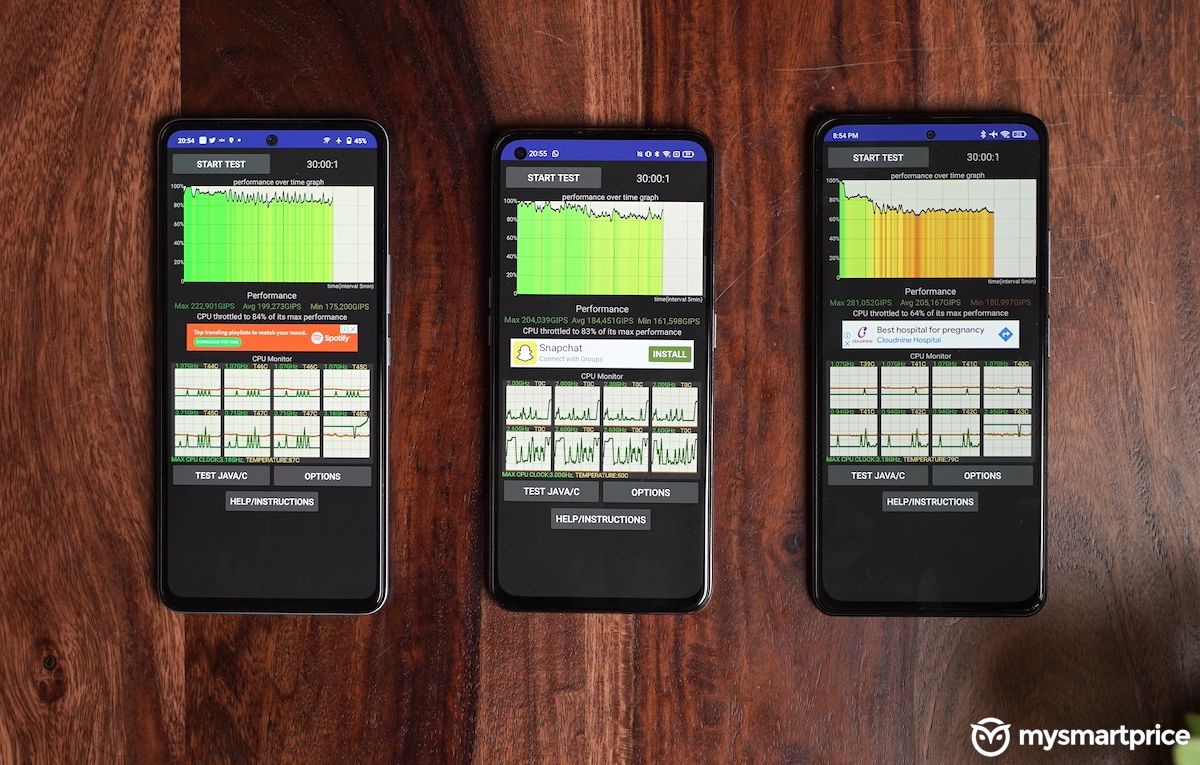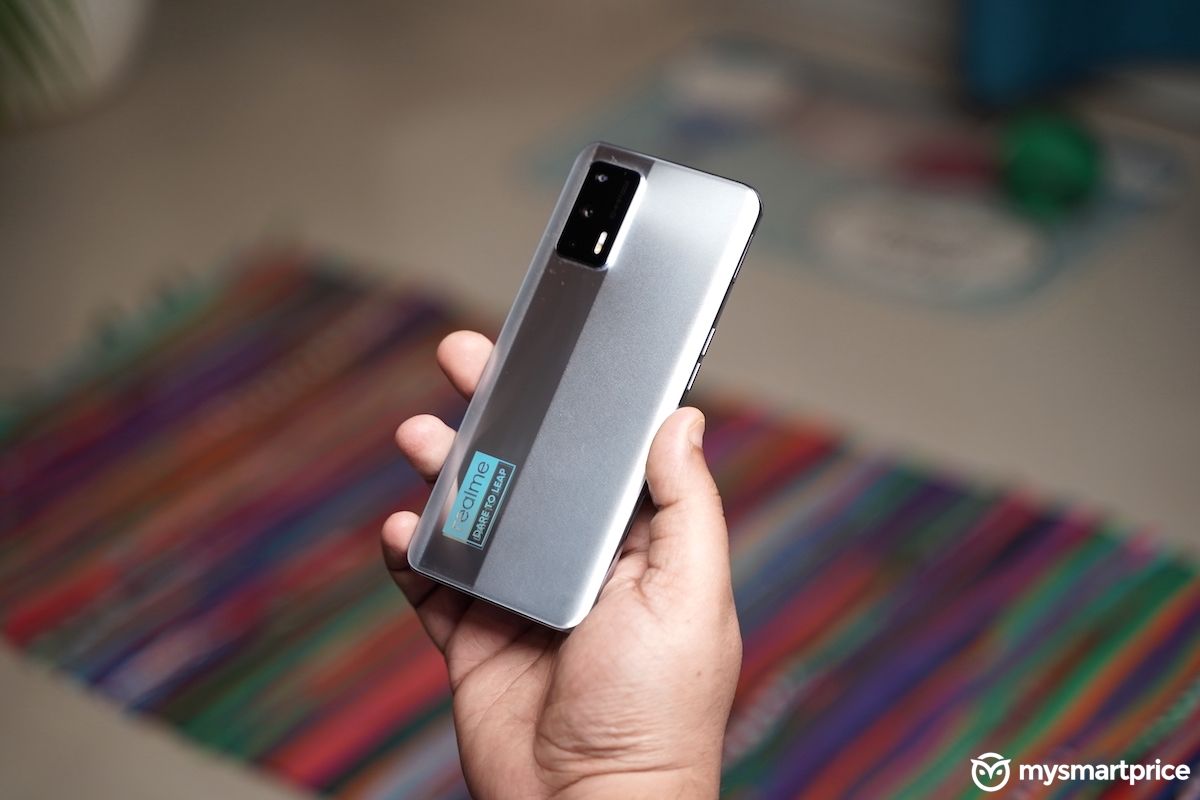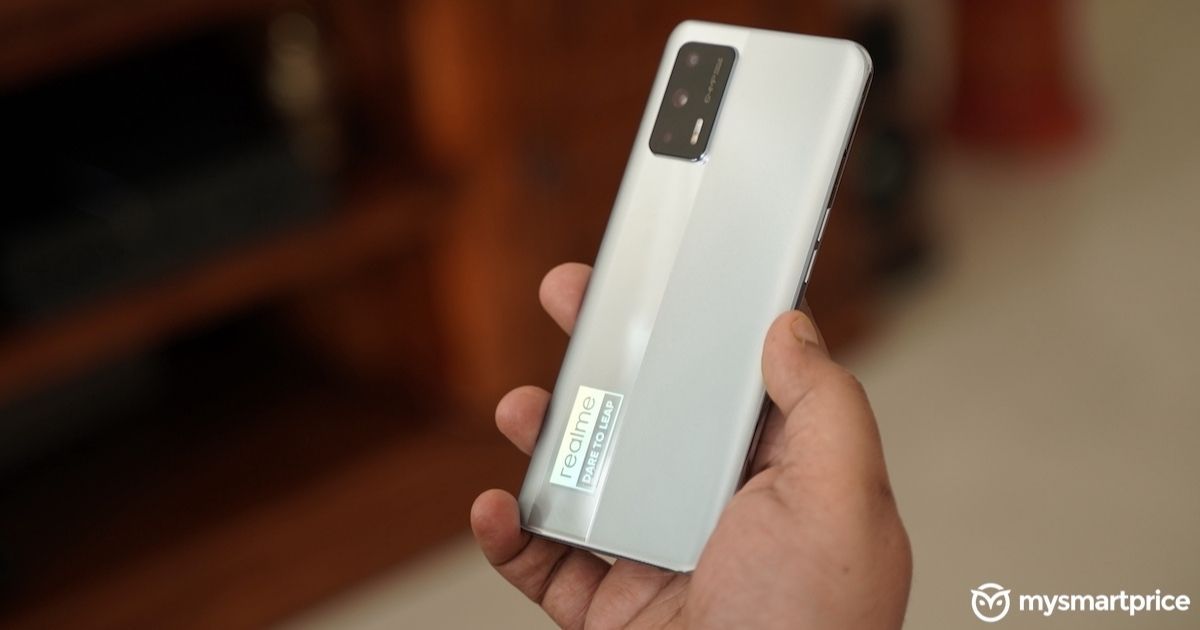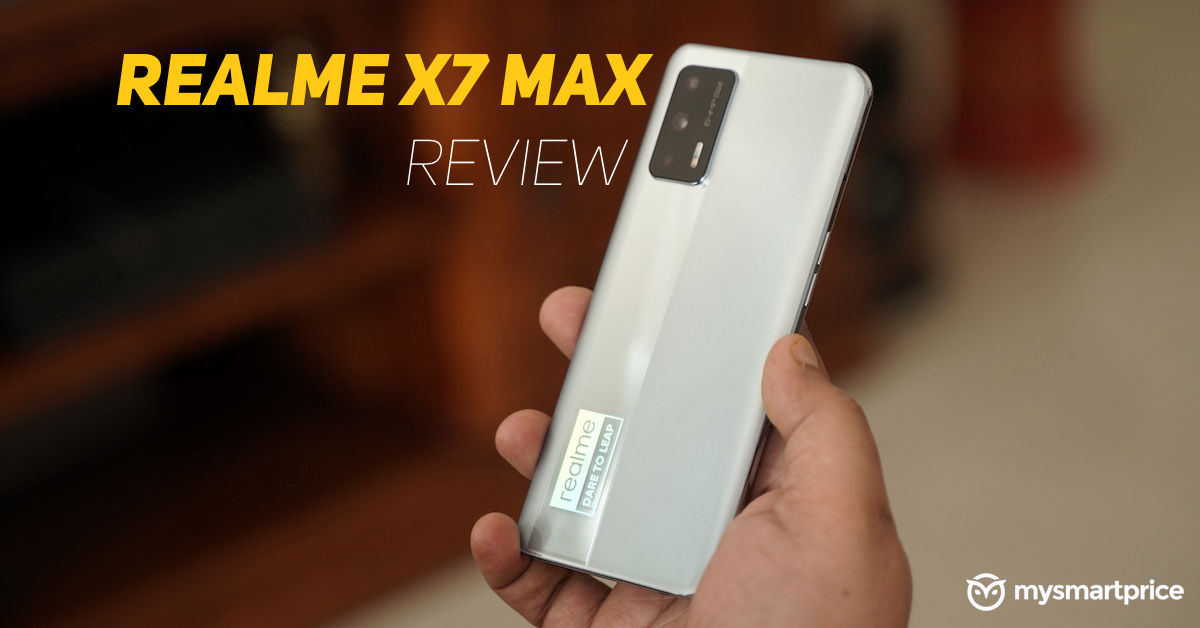
The Realme X7 Max is India’s first phone with Mediatek’s most powerful chipset yet – the Dimensity 1200. And, Realme has priced it in the same ballpark range as two of the hottest phones in the 30k price category right now: the iQOO 7 and the Mi 11X. But, the X7 Max does a few things differently. And, the bigger question is – is the Dimensity 1200 a better bet than the Snapdragon 870? Are the other features such as camera, battery, software, etc better than the competition? Well, let’s find out.
Design
There is no denying that the X7 Max looks similar to the OPPO F19 Pro. It is made entirely of polycarbonate, both the rear casing and the frame. The panel on the rear has this textured design in matte finish with a reflective and smudge-inducing glossy plastic strip. This strip has a colour shifting Realme – Dare to Leap logo as well. Honestly, I am not a fan of the design or the weird feel of the texture on my palm while holding it. And, that is a pity considering the ergonomics are fantastic since the X7 Max is a smaller phone compared to the iQOO 7 and the Mi 11X. Additionally, I am not a fan of the shiny faux metal look of the frame.
But functionally, the X7 Max hits the home run with a dedicated 3.5mm audio port with support for Hi-Res audio. The other two phones do have Hi-Res support, but don’t come with a dedicated audio port. In my testing, the internal DAC was tuned to suppress the mids. My KZ ZSN Pro X struggled to shine through. That apart, it offers a good listening experience and the convenience factor is the icing on the cake.
Now, the Mi 11X has a couple of extra advantages in terms of design:
- It has the trademark Infrared Blaster found on all Xiaomi phones.
- Xiaomi has also added a true stereo setup with support for Dolby Atmos, which is also present on the Realme X7 Max but not on the iQOO 7. As for the performance of the speakers, the X7 Max and the iQOO 7 sound pretty good but the Mi 11X does offer louder volume levels and some more punch in the bass, making it sound fuller.
By the way, the Mi 11X also offers IP53 rating and the X7 Max has IPX4 rating. Which means, the Mi 11X offers dust protection which the X7 Max does not. And, the X7 Max has slightly better protection from water damage.What I feel is the X7 Max, despite its compact size and great ergonomics, is not as premium as the iQOO 7 or the Mi 11X. Moreover, the design is pretty average too. There’s really no distinction between this phone and any Realme phone under Rs 20,000.
Display
The X7 Max has a smaller 6.43-inch display compared to the 6.6+ inches on the Mi 11X and the iQOO 7. And, these displays use an AMOLED panel with a 120Hz refresh rate. On the Realme X7 Max, you get the option to let the system automatically decide which refresh rate to use. It’s no surprise that the display is super smooth. Having said that, in our objective testing, the X7 Max’s display falls short. The colour accuracy and display tuning features are better on the iQOO 7 and the Mi 11X.
| Phone name | Peak brightness Daily | Peak brightness HDR |
| Realme X7 Max | 658 nits | 601 nits |
| iQOO 7 | 730 nits | 1689 nits |
| Mi 11X | 733 nits | 1196 nits |
All the three phones come with HDR capabilities but only the Mi 11X actually offers HDR playback on Netflix. Although, in my HDR peak brightness testing, the iQOO 7 came out on top followed by the Mi 11X and finally the Realme X7 Max. In fact, the X7 Max lags behind in peak brightness even in daily usage. That’s not it, the Mi 11X offers MEMC with video playback whereas the iQOO 7 offers a dedicated display chip for frame interpolation in games. I legit use the iQOO 7 as my Call of Duty Mobile device. The 120fps upscaling has improved my twitch responses by leaps and bounds.
Also, part of the display is the haptic feedback. Realme claims that it has added a Z-axis motor for a refined vibration feedback. And, I honestly feel it is a joke of an implementation compared to the Mi 11X and the iQOO 7. The vibration feedback is implemented in very few UI elements across Realme UI 2.0, and the effect is extremely timid and rattly. The iQOO 7’s haptic feedback is just sublime in comparison with the Mi 11X coming close behind it.
Moving on to the in-display fingerprint scanner, it is plenty fast on the Realme X7 Max, same as the iQOO 7. But the side-mounted physical fingerprint scanner on the Mi 11X is faster and possibly more accurate too.
Overall, the display on the Realme X7 Max falls short of the high standards set by the competition. Realme really needs to go back to the drawing board and work on the display performance of its phones.
Also read: Xiaomi Mi 11x Review: A Great Phone with Average Cameras
Software
The Realme X7 Max runs on Realme UI 2.0 with Android 11 as the base. Yup, there are a few extra third-party apps but they can be deleted. And thankfully, no unwanted notifications or ads popped up during my time with the phone. So, the experience, just like the UI, was pretty clean. Plus, one reason why I love Realme UI is it lets me use my own icon packs. And, it is extremely fast and well optimised. It is the closest to stock and Oxygen OS, if you ask me. Realme has really done a good job with Realme UI. Of the three, I’d easily pick Realme UI 2.0 as the best followed by MIUI 12.5 and then FunTouch.
Camera
I’ve done a detailed camera deep dive. Please take a look at this article to see the differences. But, here is my final take nonetheless:
If I had to pick one camera from the three, I’d easily pick the iQOO 7 as my choice. It is a confident shooter with a look that will appeal to most folks. I always managed to capture a good picture with the phone. For my second option, I’d recommend the X7 Max to folks who capture a lot of pictures of friends and family because the portrait shots, selfies and human subject pictures, in general, look good. Plus, the low light performance is better than the Mi 11X.
Performance
Like I mentioned at the start, the Realme X7 Max is the first phone with the Mediatek Dimensity 1200 SoC in India. But, I have already tested the Redmi K40 Gaming Edition with the same chip and it is not as powerful as the Snapdragon 870. It comes close in terms of benchmarks but sustained performance, especially in gaming, is a letdown. Take a look at our 3DMark Wild Life Stress Test results. The Realme X7 Max managed a stability of only 60.5%. In comparison, the iQOO 7 was super stable at 99.3% and the Mi 11X was at 81.4%.
But, I did notice that the X7 Max generally ran slightly cooler, even while playing Call of Duty: Mobile if that’s any consolation. By the way, for some odd reason COD cannot play back at Very High Graphics and Max frame rates at the moment, which was possible on the Redmi K40 Gaming Edition. Realme is looking into it. As for AnTuTu, I never managed to achieve the 7 lakh plus score that Realme claims. And, the iQOO 7 is still the phone to beat when it comes to benchmark scores. As for CPU Throttling, the X7 Max was generally more stable where the Mi 11X throttles a lot.
Overall, the MediaTek Dimensity 1200 SoC, I’d say, is the second best chip in this category. As far as raw and sustained performance is concerned, the Snapdragon 870 chip is still the king. Regardless, it is good to see that MediaTek has come such a long way.
Network
The one reason why a lot of folks will gravitate towards Realme X7 Max is for its stellar 5G support, which makes it pretty future proof. You get support for 7 SA and NSA 5G bands (N1/N28A/N40/N41/N77/N78/N79) as opposed to only two (N77/N78) on the Mi 11X and one (N78) on the iQOO 7. That’s not it, the Realme X7 Max can also use Dual Channel Acceleration with 5G and Wi-Fi being used at the same time for better stability. Moreover, the 4G network performance and the call quality was fantastic. It was generally slightly better than the Mi 11X and the iQOO 7.
Battery Life
The X7 Max has a 4520mAh, whereas the Mi 11X has a slightly smaller 4500mAh unit and the iQOO 7 has an even smaller 4400mAh one. But, the battery life on all the three was almost on par. I got around 6 hours of screen time, which means you can get a day’s worth of usage from the Realme X7 Max. You get very similar battery life from the other two as well.
However, charging speeds are vastly different. The iQOO 7 can charge from 0 to 100 in about 30 minutes using the 66W charger. The X7 Max takes 50 minutes with its 50W charger. And, the Mi 11X takes more than an hour using its 33W charger. Objectively, the iQOO 7 has the best overall battery performance but that’s only because it can charge faster, which may or may not be important to you.
Should You Buy the Realme X7 Max?
So Realme, we need to talk. I think you really need to start introspecting. While your phones are not bad, they lack ambition. Heck, Poco has already announced the F3 GT with Dimensity 1200 SoC for India, which is a rebranded Redmi K40 Gaming Edition I tested recently. That phone at least has some distinction going for itself in its gaming DNA. Unlike the X7 Max, which is an above average phone through and through.
Don’t get me wrong, the Realme X7 Max is easy to recommend to someone looking at a 5G option with clean software that is also compact when you consider the current landscape of big phones. But 5G is still a while away in India and it makes more sense to hold off on future proofing. Right now, prioritising the other parameters such as camera, performance, design, display, and software are the key. And, in most of those parameters, the iQOO 7 comes out on top for me. And, as for the Mi 11X, you can always be assured of a great value proposition. Plus, there’s also the promise of a robust service network+brand pull to go along with it.
So, coming back to you Realme. Please consider the X7 Max as a clarion call to make a change. Go back, make a phone that excites us. Go back to the days of the Realme X2 Pro and Realme 7 Pro. We deserve better. You deserve better.

